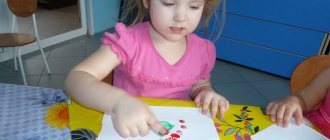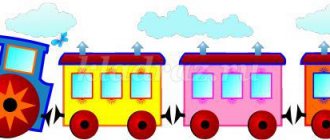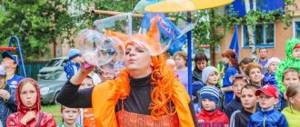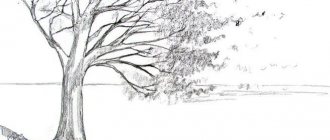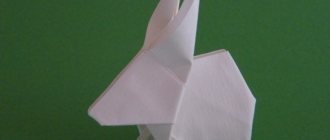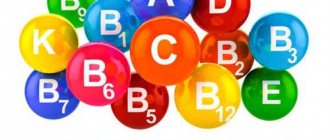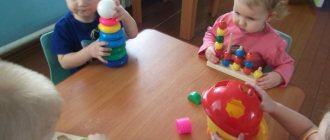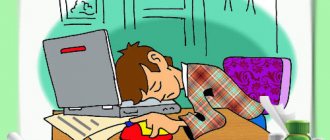CHILDHOOD GUIDE
Didactic manual
"Food Pyramid"
for children of senior preschool age
Kuzina Elena Gennadievna,
teacher of MBDOU No. 103,
Nizhny Novgorod
Goal: developing a healthy lifestyle by studying the principles of proper nutrition.
Tasks:
- form the right attitude towards your health through the concept of healthy eating;
- teach how to choose healthy and safe food products and create a menu;
- to form the basis of rational nutrition in children.
The game is designed taking into account the age characteristics of children of senior preschool age. Using this game, you can give children tasks of varying difficulty. The game develops logical thinking in children, develops memory, expands vocabulary, contributes to the education of the basics of children's nutritional culture and the desire to lead a healthy lifestyle. Children can play this game either together with adults or alone.
The didactic manual is a tetrahedral pyramid, on each side of which there are different tasks on proper nutrition. On the first side, you need to create a menu for the day: breakfast, lunch, dinner (children insert pictures depicting various products into their pockets). On the second side are “Lullia” circles about healthy products. On the third side, children correlate vitamins with foods that contain them. On the fourth side, children divide foods into three groups according to their content: proteins, fats, carbohydrates.
This didactic manual allows you to expand children's knowledge about proper nutrition, and also promotes a healthy lifestyle.
I propose one of the options for working with this manual: conversation “Secrets of healthy eating”
Progress of the conversation:
-What do you guys think, what does it mean to lead a healthy lifestyle? (Children's answers).
-Guys, “Healthy lifestyle” includes several components. And one of them is very important – healthy eating. But is all the food we eat equally healthy? What foods should you choose to maintain your health for many years? We will talk about this today “Secrets of healthy eating”
Proverb: “We are what we eat.”
-How do you understand these words?
-Our health depends entirely on what we eat.
What is healthy eating? Demonstrating the guide “Food Pyramid”
- Varied food.
-How do you understand this?
-Different foods contain different nutrients and vitamins. You can’t eat the same thing all the time, you need to eat different foods.
- Complete nutrition.
-How do you understand this?
- A complete or balanced diet is a sufficient amount of proteins, fats, carbohydrates, vitamins, and minerals.
Proteins are the most important component of food. The basic life processes in the body depend on them: metabolism, the ability to grow, reproduce, and think.
Not all proteins are created equal. Combinations of plant and dairy products are favorable, for example, a combination of a piece of bread and a glass of milk, flour products with cottage cheese, flour dishes with meat. Fish is healthy, dairy products, butter, and nuts are very healthy.
These products help build the body and strengthen bones. It is these products that supply cells with building material for growth.
Other foods give the body energy. To move, to think well, not to get tired. These foods contain carbohydrates. These are: buckwheat, honey, oatmeal, raisins, butter, bread. The main energy carbohydrate is glucose, so it should be a necessary component of food. Nerve cells and brain cells operate only on glucose. You need to eat a lot of vegetables and fruits.
There is also another energy resource - fats. The heart, for example, uses fat almost exclusively for fuel. Dietary fats are true energy concentrates. The complete exclusion of fats from the diet leads to serious health problems; their deficiency leads to a delay in the development of a growing organism, inflammation of the skin, but excess fat leads to an increase in cholesterol levels in the blood. In this case, the condition of the blood vessels worsens.
An essential component of a healthy diet are vitamins and minerals.
-Which foods contain vitamins and minerals help the body grow and be healthy. Fruits and vegetables are real storehouses of vitamins necessary for humans. If your body has a lot of vitamins, it will easily defeat any disease, and you will have a good mood and excellent health.
- Healthy diet.
-How do you understand this?
-Healthy nutrition – first of all natural. Therefore, of course, preference should be given to food without preservatives (whole bread, cereals, meat, fish).
Food must contain vitamins! Fresh vegetables and fruits, honey, dried apricots, nuts, raisins, buckwheat, oatmeal, millet - these are products that increase the vital activity of the body. You need to include them in your diet! These are the most useful products!!!
-We have with you the “Healthy Eating Pyramid”.
(Working with the healthy eating pyramid.)
The cards contain the names of food products.
Food : cereals, fruits, vegetables, wholemeal bread, fish, meat, milk, candy, sugar, butter, cheese, eggs, sausage, cake, chips, lemonade, salt, nuts, etc.
You need to distribute them among the floors of the pyramid:
on the 1st floor - fats - the healthiest foods;
on the 2nd floor there are squirrels. they need to be consumed in smaller quantities;
on the 3rd floor - carbohydrates - foods whose consumption should be limited or not consumed at all;
Well done!
I wish you to bloom and grow
Save money, improve your health,
It is for a long journey -
The most important condition!
Formation of primary ideas about the values of a healthy lifestyle in preschool children Educational books for young children on a healthy lifestyle Healthy lifestyle Formation of a healthy lifestyle in preschool children in the process of physical education and educational activities >
Games for Health Day
Didactic game “Name the objects”
Goal: to consolidate knowledge about the subjects necessary for the work of a doctor. Enter words from medical terminology into the active dictionary.
Guys, look at these objects and tell me what they are called. (Thermometer, syringe, cotton wool, bandage, phonendoscope, tablets, heating pad, brilliant green, tweezers, massager). Do you know what profession a person needs these items? To the doctor. What does a doctor do? He treats, monitors our health, gives vaccinations, massages, weighs, etc.)
Didactic game “Tell me what these objects do”
Goal: To activate verbs and the use of nouns with them in children’s speech.
Tell me, how does the doctor use these items? What does a doctor do with a syringe? Gives injections. What does a doctor do with a thermometer? Measures temperature. What does a doctor do with cotton wool? Lubricates the skin before injection. What does a doctor do with brilliant green? Lubricates the scratch. What does a doctor do with a bandage? Bandages the wound. What does a doctor do as a massager? Gives a massage. What does a doctor do with a phonendoscope? Listens to breathing and heartbeat. What does a doctor do with a heating pad? Warms up the sore spot. What does a doctor do with tweezers? He takes out the splinters. What does a doctor do with a band-aid? Seals calluses.
Didactic game "Find the differences"
Goal: to develop voluntary attention, observation, to consolidate the ability to distinguish and name colors.
Take a look at this picture. Who is depicted on it? Doctor. Why do you think doctors wear white coats? If the robe gets dirty, it will be immediately noticeable on the white, and the robe will be washed. Who is in this picture? Also a doctor. Are these pictures the same? These pictures are very similar, but still not the same. Your task is to find the differences.
Didactic game “Which doctor should we go to?”
Purpose: To train children in understanding pictograms, distinguishing facial expressions and comparing them with feelings and emotions. Learn to speak in complex sentences.
Guys, look at these faces. (Show pictograms). Which of these doctors would you go to? Why? (Kind, affectionate, cheerful, attentive, caring). How do you greet and introduce yourself to the doctor? Hello, my name is ..., and what worries me is ...
Didactic game “Vitamins are pills that grow on a branch”
Goal: Expand children's knowledge about vitamins, consolidate knowledge about vegetables, fruits and berries.
Guys, you can help maintain health and get sick with the help of vitamins. Have any of you taken vitamins? Vitamins make our body strong and healthy, resistant to disease. But vitamins come not only in tablets, they also grow on branches. A lot of vitamins are found in berries, fruits and vegetables. Name what fruits do you know? Vegetables? Berries?
Didactic game “Find out the taste”
Goal: to develop a taste analyzer, consolidate knowledge about fruits, vegetables, berries. (Children are asked to close their eyes, taste and name what they ate).
Didactic game “Recognize by smell”
Goal: to develop children's sense of smell. Introduce aromatherapy.
Some plants help a person not only when he ingests them. There are plants that even help with their scent. We made garlic pendants (chopped garlic in a plastic Kinder Surprise egg with holes, on a ribbon). The smell of garlic protects against flu and colds. Here's mint. Its smell restores strength and helps to cope with cough. And this is lavender. Its smell helps you sleep. This is the peel of your favorite fruit. Which one? Orange. Its smell lifts your mood and improves your appetite. What plant are these needles? Pines. Its smell is soothing and helps relieve coughs. This houseplant is familiar to you. What is it called? The smell of geranium eliminates anxiety, increases efficiency and attention. (Children are asked to identify some plants by smell).
Didactic game “Fill the jar with vitamins”
Goal: to develop fine motor skills of the hands, to learn to place the image evenly over the entire surface.
Children are invited to draw “vitamins” - circles using a stencil ruler. You can stick plasticine onto cardboard cut out in the shape of a jar, and fill it with peas – “vitamins” – by pressing on top.
On the topic: methodological developments, presentations and notes
This didactic game systematizes children’s knowledge about different sports and athletes. Expands children’s horizons. Activates thinking and speech….
The didactic game “Learn the ball game” is intended for children 5-7 years old. Objectives: 1. To form children’s ideas about various types of ball sports. 2. To develop the ability to find paired cards, match…
With the help of this didactic game, the teacher will help children clarify their ideas about vegetables, ask clarifying questions, maintain a dialogue with their group mates...
Didactic games on valeology for preschoolers
Interesting didactic games for preschool children help to consolidate valeological knowledge - knowledge about the benefits and need to take care of their health.
Didactic game “It turned out to be a man”
Goals: strengthen parts of the human body, develop imagination.
Material: cards with body parts that, when folded, form figures of male and female people, in different clothes and poses.
The number of players depends on the number of cards
Progress of the game: children are offered sets of cards depicting parts of the human body, and the opportunity, at their own discretion, to select parts from one set or put together parts from different sets to make a little man.
SEE ALSO Lesson summary on the topic of introducing children to a healthy lifestyle Memo on developing healthy lifestyle habits Didactic outdoor games Healthy lifestyle Lapbook “Health Book”
Didactic game on valeology “What to do”
Goal: to consolidate children's knowledge about the prevention of colds.
Material: a set of cards depicting preventive measures aimed at a quick recovery and cards on other topics Number of players from 1 to group, depends on the number of cards
Progress of the game: from the total number of cards, children choose and explain what is useful for the prevention of colds.
For older children, you can suggest creating an algorithm for the prevention of colds.
Didactic game “Healthy teeth”
Goal: to form the habit of taking care of teeth, to expand preschoolers’ understanding of what is good and bad for teeth.
Material: pictures depicting dental care products, food, various “inedible” items (toothpaste, toothbrush, dental floss, apple, carrot, bread, cheese, nuts in shell, pencil), 3 cardboard squares of different colors.
Progress of the game: 2 or 3 squares and a set of cards are laid out in front of the child, the number of cards and squares depends on age, the task is given to arrange the cards into squares according to categories
- dental care products
- what is good for teeth
- what is harmful to teeth
Didactic game on valeology “Clean Hands”
Goal: reinforce hand washing sequence
Material: 8 cards depicting a child in different stages of hand washing.
Progress of the game: invite the child to lay out the cards in the desired sequence.
Didactic game “Our senses”
Goal: to consolidate children's knowledge about the senses.
Material: 4 puzzles depicting a nose, mouth, ear, eye and corresponding cards
Progress of the game: children look at the pictures and put together a puzzle.
Didactic game "Cleaning the children's room"
Goal: to form in children the habit of keeping the children's room tidy and clean.
Material: cards depicting pieces of furniture (bookshelves, shelves for toys, desk, wardrobe, bed), a set of pictures depicting toys, books, stationery, clothes, bedding.
How to play: put the pictures on the corresponding cards
Didactic game “We’ll go for a walk”
Goal: to consolidate children’s knowledge about seasonal clothing, the sequence of putting on
Material: 4 colored cardboard strips (color: yellow, orange, blue, green), 8 cards each with images of clothes and shoes for 4 seasons.
Progress of the game: children choose a strip, add cards with clothes and shoes to it, lay out the cards from left to right in the order they are put on.
Note: for children of primary preschool age, the task can be reduced to choosing seasonal clothing.
Didactic game on valeology “What is health”
Goal: To reinforce the concept of health in children
Material: mnemonic table “What is health”
Progress of the game: a thematic mnemonic table is attached to a magnetic board, using which it is easy to tell a child about the concept of health.
Didactic game on valeology “Healthy person”
Goal: to reinforce in children the concept of how to distinguish a healthy person from a sick one.
Material: mnemonic table “Healthy person”
Progress of the game: a thematic mnemonic table is attached to a magnetic board, according to which the child will independently tell about the difference between a healthy person and a sick person.
Didactic game “To grow up healthy”
Goal: to develop in children the need for a healthy lifestyle.
Material: pictures depicting positive and negative situations. (gymnastics, cycling, sunbathing, reading a book on the couch, snacking on the go, eating with dirty hands, etc.)
Progress of the game: Option 1 - presenter: “To grow up healthy, you will...”, the child selects the corresponding plot picture and completes the first part of the sentence. Option 2 - presenter: “To grow up healthy, you shouldn’t...”. Option 3 - tasks alternate
Didactic game on valeology “How to improve health”
Goal: to consolidate preschoolers’ knowledge about health promotion opportunities
Material: a sheet of paper with a picture of a person in the center, colored pencils.
The number of players is unlimited
Progress of the game: the child is given a large sheet of paper (such that there is room for drawing), the task is to draw nearby everything that is useful to a person for improving health. If a child studies alone, at the end he tells an adult what is depicted. If a group of children is studying, they can compare what is drawn, who drew more, tell each other about what ways they know to improve health
Didactic game on valeology “Harmful or useful”
Goal: to consolidate children's knowledge about healthy and harmful foods
Material: cards with the image of a cheerful and dissatisfied person, a set of cards with images of products that are healthy and harmful to human health.
How to play: Place two large cards with the faces of a cheerful and dissatisfied man on the table. Invite the child to put cards with images of products that are healthy for a person to the cheerful little man, and with products harmful to human health to the disgruntled little man.
Didactic game “What do we need for hardening”
Goal: to consolidate the knowledge of preschoolers about hardening methods, accessories necessary for organizing hardening procedures.
Material: plot pictures depicting types of hardening, cards depicting items necessary for hardening.
Progress of the game: from the pictures distributed to the children, you need to select an image of the equipment necessary for hardening, tell what method of hardening it is used for, and what it is used for.
Didactic game on valeology “Cooking”
Goal: to consolidate the concept of healthy products, to give an idea of what products different dishes are prepared from.
Material: sets of pictures depicting products needed to prepare a dish (soup, borscht, compote, salad) depending on the dominant theme
Progress of the game: from a set of pictures, children choose images according to a given theme, for example, for compote6 apples, pears, plums, etc., for soup: meat, potatoes, carrots, onions, etc.
Didactic game “Where the vitamins are hidden”
Goal: to consolidate children's knowledge about vitamins and their content in various products.
Material: large blank cards and cards with pictures of products.
Progress of the game: the teacher invites the children to choose cards with images of foods that contain vitamins, for example, E, and arrange them on one large card (tomato, chicken yolk, beans, peas, vegetable oil, nuts, etc.), then, vitamin A, C, etc. depending on the dominant topic.
Didactic game “Which athlete?”
Goal: to consolidate children’s knowledge about sports, name the athlete’s equipment.
Material: cards depicting equipment for various sports.
Progress of the game: from the cards provided, the child chooses the equipment of a football player, hockey player, basketball player, etc., names the item, tells why it was chosen, explains why the athlete needs it
Didactic game “Are we alike?”
Goal: to teach to identify the differences and similarities between humans and animals
Material: cards with images of animals and children
Progress of the game: invite children to carefully look at the cards, find what a person and an animal have, tell how a person differs from an animal.
Didactic game “Guess by description”
Goal: to teach children to describe a person in words, highlighting his characteristic features.
Progress of the game: the children of the whole group participate in the game, they sit or stand, one child, chosen by a counting rhyme or in some other way, independently chooses an object - one of the children and makes up a descriptive story, the children must guess who the leader thought of, The first one who recognizes the child by description becomes the leader.
Didactic game “Gathering a doll for a walk”
Goal: to consolidate children’s knowledge of seasonal clothing, shoes, hats, and accessories.
Material: 4 dolls and different seasonal clothes for them
Progress of the game: children are divided into teams, draw lots, choosing the season, each team collects a doll for a walk through the season. You can order the weather for your opponents (for example, summer, very hot or summer, it’s raining, etc.).
Didactic game “What can’t you do without?”
Goal: to consolidate preschoolers’ knowledge about personal hygiene products, their purpose and use.
Material: various subject pictures, including images of personal hygiene products, chips.
Progress of the game: from a variety of cards with objects, children choose those that depict objects necessary for the named hygiene procedure (for example, you need to brush your teeth - children choose cards: toothbrush, toothpaste, glass of water) for the correct answer the child receives a chip.
